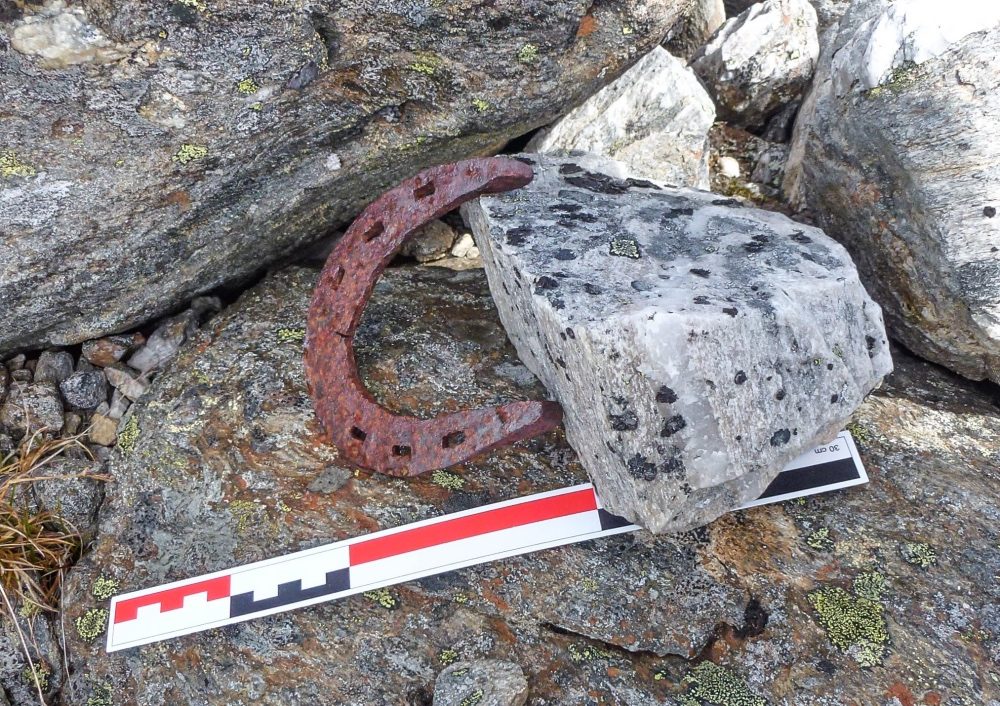Archaeologists surveying the receding Norwegian glaciers have retrieved nearly a dozen horseshoes and other equine-related objects from eight sites over the past 16 years. Now, more finds have emerged as researchers explore the Horse Ice Patch, and they are hinting that more is to come.
The Oppland County, Norway, glacial archaeologists announced in a Wednesday, April 6, 2022, Facebook post that they recovered “an iron horseshoe and a horse legbone [sic]” while surveying the eastern part of what is referred to as the Horse Ice Patch. The shoe has three evenly spaced nail holes in each branch and appears to feature calkins, although they aren’t as prominent as those discovered in the Leberdeen ice patch in 2019.
“The shape of the horseshoe suggests that it is post-medieval,” according to the post. “The traffic through the nearby Lendbreen pass started around A.D. 200 and continued to A.D. 1500. So far, there was no evidence of Iron Age or medieval traffic in the Horse Ice Patch pass.”
The archaeologists, whose findings were recently published in the Journal of Field Archaelogy, have retrieved more than 20 horseshoes, including one with a partial hoof capsule still attached, from Lendbreen. Dating the artifacts has been possible due to a long documented history of shoeing horses in Norway.
“Horseshoes were used from the 11th century onwards in Norway, and have changed their shape through time,” according to the researchers. “This allows a dating of them. Most of the horseshoes from Lendbreen are medieval (A.D. 1050-1537).”
The new discovery comes nearly 3 years after the archaeologists found a horse snowshoe and the aforementioned shod hoof capsule at nearly 2,000 meters on the upper edge of the Lendbreen ice patch. The previous year, they found a horseshoe with three nails still in their holes.
Learn More
- On a Mountain High: Finding and Documenting Glacial Archaeological Sites During the Anthropocene: Archaeologists detail the methods of finding and documenting glacial sites.
- Ancient Horseshoe Provides Glimpse into Past: An ancient horseshoe was discovered at the Lendbreen ice patch in the mountains of southern Norway. Secrets of the Ice researchers uncovered the shoe from beneath a rock after the ice that was preserving it had melted.
- Norwegian Archaeologists Discover Equine Snowshoe and Shod Hoof: As the glacial ice in the high mountains of Norway continues to recede, treasures from a bygone era emerge and archaeologists race to collect the artifacts for preservation — including a recently discovered shod horse’s hoof and an equine snowshoe.









Post a comment
Report Abusive Comment